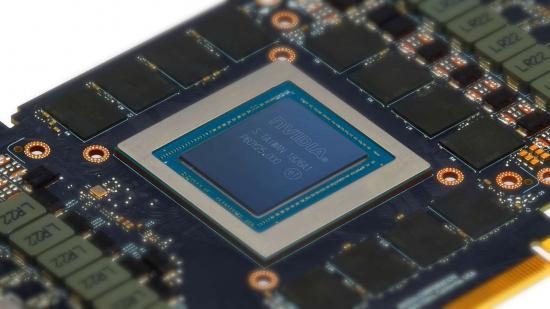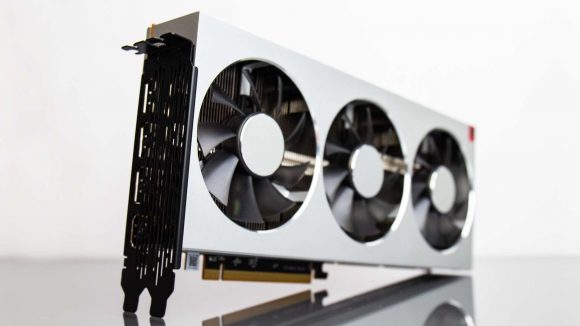Despite AMD already launching its Radeon VII graphics card on the 7nm node, and promising mainstream 7nm AMD Navi GPUs before the end of September, Nvidia is still adamant it’s not going to switch just because everyone else is. During Nvidia’s recent Q1 earnings call Nvidia CEO, Jen-Hsun Huang, explained he wants to do much more than just take an off-the-shelf process node and port its GPUs over… in what seems like a thinly veiled dig at AMD.
The current Turing GPUs are all based on the 12nm FinFET process, and there has been no official talk from the green team about when it might transition to all smaller transistor lithography or even what that might be. Nvidia has been announced as one of the launch partners for Samsung’s 7nm EUV process, which is set to go into volume production in 2020. That makes it the earliest likely timing for a new GPU architecture and a new node for Nvidia GPUs.
Though given that Jen-Hsun is still talking about working on node designs with TSMC, there is still the possibility that it’s adapting a 7nm process with the company’s traditional pureplay foundry partner. “In terms of process nodes we tend to design our own process with TSMC,” explains Huang. “Buying an off-the-shelf process is something that we can surely do, but we want to do much more than that.”
But Nvidia is obviously not in a desperate rush to make the change just yet, and indeed sees no need to given the competition around right now. AMD has already released its most powerful 7nm graphics card of this generation, confirming that the future Navi GPUs will be positioned below the Radeon VII, but it’s only just about keeping up with the Turing architecture’s efficiency at 12nm.
Screen queens: Your GPU needs the best gaming monitor to really perform at its best
When it came to our testing, despite having a much lower TDP, there wasn’t actually a lot in it when comparing the peak Wattage of the Nvidia and AMD GPUs. But in frame rate performance terms, the competing RTX 2080, which costs about the same amount of cash as the Radeon VII, generally houses the speedier gaming chip.
“If you take our Turing,” says Huang, “and you compare it against a 7nm GPU on energy efficiency, it’s incomparable. In fact, the world’s first 7nm GPU already exists, and it’s easy to go and pull that and compare the performance and energy efficiency against one of our current GPUs.”
So Nvidia is looking to work on a new process together with whichever foundry it decides is the one to take any potential GPU die-shrink on, whether that’s TSMC or Samsung.
“The real focus for our engineering team,” says Huang, “is to engineer a process that makes sense for us and to create an architecture that is energy efficient.”
Even if Nvidia did just pick an off-the-shelf process node porting its Turing architecture over would result in some serious efficiency gains over the AMD competition, so until AMD can offer something at 7nm that the current 12nm Nvidia chips cannot there is no imperative for the green team to push forward the change.
We’re certainly unlikely to see anything below 12nm from Nvidia this year, at least in the consumer space. The rumoured RTX Turing refresh cards are expected to mainly arrive sporting a faster spin of the GDDR6 memory, pushing up to 16Gbps from the current 14Gbps memory chips. And, even if they did arrive with slightly different CUDA core counts, it’s unlikely that they would see a die-shrink at the same time.

